
Browse an alphabetical list of photographs. These historical images portray people, places, and events before, during, and after World War II and the Holocaust.
<< Previous | Displaying results 51-75 of 134 for "Photo" | Next >>
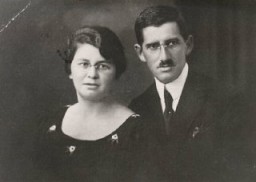
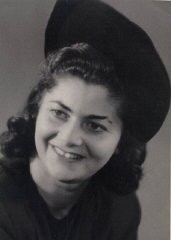
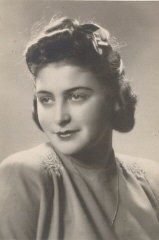
Some 7,000 Jewish men ordered to register for forced labor assemble in Liberty Square in German-occupied Salonika. Salonika, Greece, July 1942.
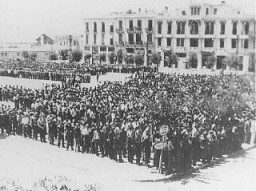
Reich Labor Service battalions parade before Hitler during the Nazi Party Congress. Nuremberg, Germany, September 8, 1937.
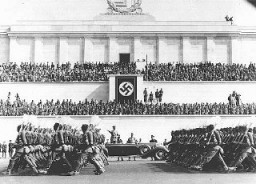
Spectators cheer passing SA formations during a Reichsparteitag (Reich Party Day) parade in Nuremberg.
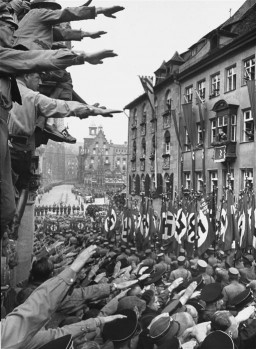
Reich President Paul von Hindenburg poses with Chancellor Adolf Hitler. Hindenburg appointed Hitler chancellor on January 30, 1933. Germany, 1933-1934.
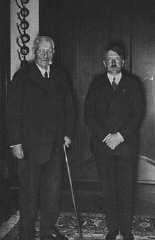
Reinhard Heydrich (right) and his deputy, Karl Hermann Frank (center), stand at attention during Heydrich's inauguration as governor of the Protectorate of Bohemia and Moravia. Prague, September 1941.
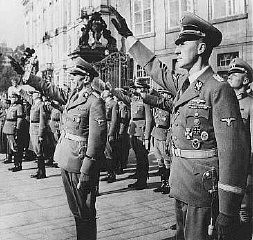
Hitler reviews a parade celebrating the reintegration of the Saar region into Germany. Saar territory, Germany, March 1935.
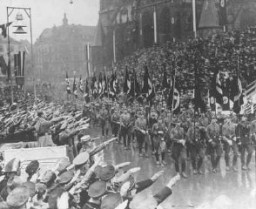
Abraham Kaplan and his wife Maria at their home in Paterson, New Jersey. He was the half brother of Blanka's grandmother. Blanka lived with Abraham and Maria when she came to the United States. She loved them dearly.
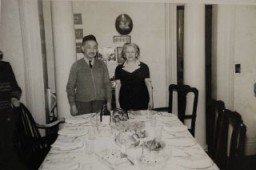
Soon after liberation, camp survivors bathe in outdoor showers set up by the British. Bergen-Belsen, Germany, after April 15, 1945.
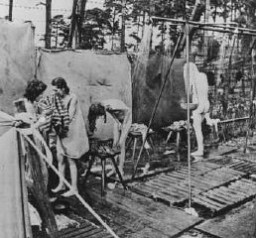
Relief supplies in a refugee camp in eastern Chad for refugees from the Darfur region of neighboring Sudan. Jerry Fowler, Staff Director of the Museum's Committee on Conscience, visited in May 2004 to hear firsthand the refugees' accounts of the genocidal violence they faced and of being driven into the desert.
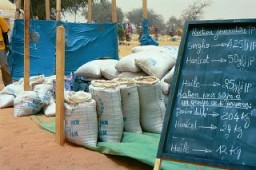
The remains of a crematorium at the Bergen-Belsen concentration camp. This photograph was taken after the liberation of the camp in 1945. Bergen-Belsen, Germany, date uncertain.

The last remaining wall of the Boerneplatz synagogue, destroyed during the Kristallnacht ("Night of Broken Glass") pogrom. Onlookers watch during the dismantling and removal of remnants of the synagogue. Frankfurt am Main, Germany, January, 1939.
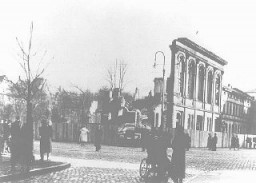
During the remilitarization of the Rhineland, German civilians salute German forces crossing the Rhine River in open violation of the Treaty of Versailles. Mainz, Germany, March 7, 1936.
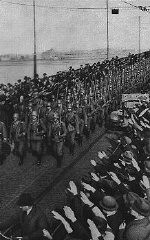
The remodeled courtroom at Nuremberg, site of the International Military Tribunal. Germany, November 15-20, 1945.
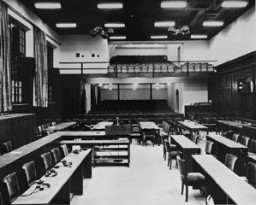
View during the remodeling of the Palace of Justice in Nuremberg in preparation for the International Military Tribunal. Nuremberg, Germany, 1945.
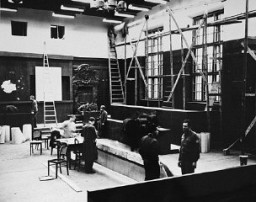
British soldiers supervise the transfer of refugees from the Exodus 1947 to deportation ships which will take them to France. Haifa, Palestine, July 20, 1947.
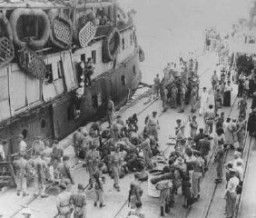
Repairs and improvements are made to the courtroom where the International Military Tribunal trial of war criminals would be held. The holes in the walls at the top (when completed) housed radio commentators and public address operators. September 11, 1945.
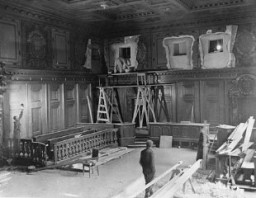
Representatives of four states who ratified the Genocide Convention on October 14, 1950. Seated from left to right: Dr. John P. Chang (Korea), Dr. Jean Price-Mars (Haiti), Assembly President Amb. Nasrollah Entezam (Iran), Amb. Jean Chauvel (France), Mr. Ruben Esquivel de la Guardia (Costa Rica), (standing, left to right) Dr. Ivan Kerno (Asst. Secretary General for Legal Affairs), Mr. Trygve Lie (Secretary-General of U.N.), Mr. Manuel A. Fournier Acuna (Costa Rica), and Dr. Raphael Lemkin (crusader for the…
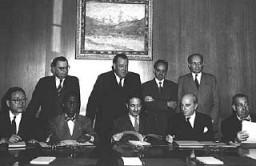
Dr. Joseph Jaksy poses with (from left to right) Valeria Suran, Lydia Suran, and his wife. The Suran sisters were among 25 Jews Dr. Jaksy rescued during the war. Czechoslovakia, date uncertain.
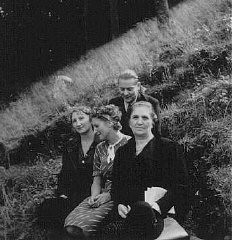
Dr. Joseph Jaksy (right) and a colleague. Dr. Jaksy, a Lutheran and a urologist in Bratislava, saved at least 25 Jews from deportations. He was later recognized as "Righteous Among the Nations." Bratislava, Czechoslovakia, prewar.
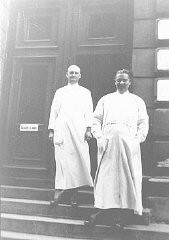
Father Bruno with Jewish children he hid from the Germans. Yad Vashem recognized Father Bruno as "Righteous Among the Nations." Belgium, wartime.
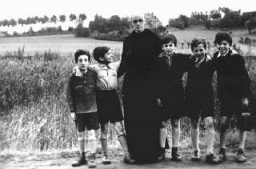
Stefania Podgorska (right), pictured here with her younger sister Helena (left), helped Jews survive in German-occupied Poland. She supplied food to Jews in the Przemysl ghetto. Following the German destruction of the ghetto in 1943, she saved 13 Jews by hiding them in her attic. Przemysl, Poland, 1944.
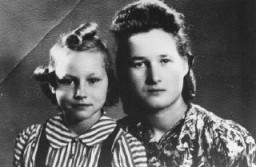
Onlookers watch during the resettlement of Romani (Gypsy) families from Vienna. Austria, September–December 1939.
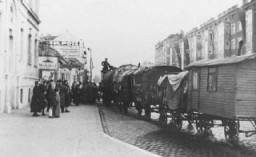
We would like to thank Crown Family Philanthropies, Abe and Ida Cooper Foundation, the Claims Conference, EVZ, and BMF for supporting the ongoing work to create content and resources for the Holocaust Encyclopedia. View the list of donor acknowledgement.